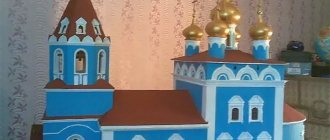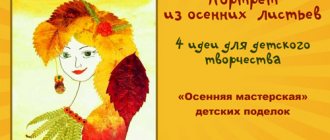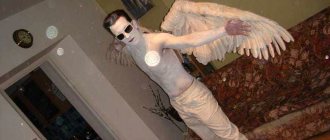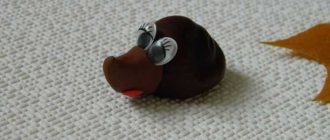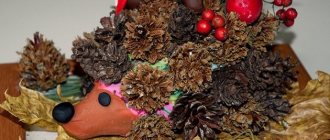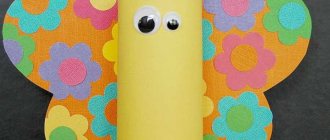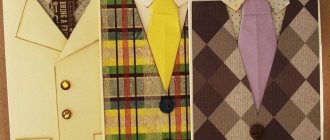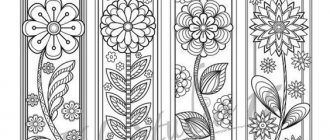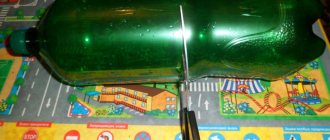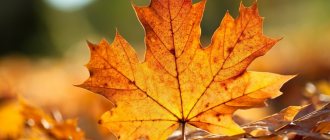In all fairy tales and cartoons, the hedgehog is a positive character. He is hardworking and kind, sympathetic and cheerful, ready to help and does not leave his friends in trouble. That's why children like this fairy-tale hero.
But the kids always show interest in the animal if they see it in a zoo corner or meet it in a forest area. Therefore, the hedgehog craft is popular among children, and they enthusiastically take on the task of creating a kind animal.
Making a hedgehog from leaves
The most important material for our painting is autumn leaves; you and your child will find them in abundance in city gardens and parks.
Choose those that you like, however, but narrow, sharp leaves are best suited for crafts. Pay attention to oak and rowan. At home, rinse our natural material thoroughly, then dry thoroughly
If there is not enough time, then iron the leaves with an iron, they will become smooth and beautiful.
Next we prepare the basis for our application. There are several ways to do this. The easiest option is to find an image of a hedgehog on the Internet, print the picture and stick it on cardboard. Remember that the image should be black and white, because children will love coloring their forest dweller. If you are good at drawing, then you can draw a hedgehog yourself.
To further develop your son or daughter’s fine motor skills, draw an outline on a piece of paper and ask them to cut it out. Additionally, outline the outline of the figure with a brown felt-tip pen so that it is bright and clear. Always focus on the age of your baby and the skills that he has or, conversely, those that need development.
When our foundation is ready, it's time to begin the most interesting and enjoyable part of our work. Spread the hedgehog's body with glue and begin to carefully glue the autumn leaves-needles. You shouldn’t limit your child’s creativity; let him realize his ideas and fantasies. After our hedgehog acquires its prickly coat, the application will need to be put aside for a while to allow the glue to dry thoroughly.
To prevent your child from getting bored, invite him to think about how you will further decorate your work. Show him pictures of an autumn forest or watch a funny cartoon where the main character is a funny prickly animal. When the sheet has dried and there is no chance of damaging the already created craft, we proceed to the final, decorative stage of the work. First, we paint the face and give it a certain expression. Our hedgehog made of leaves can smile or, on the contrary, frown with its drawn eyebrows. Imagine with your child, come up with a story about where the forest dweller is running and what he is carrying. Draw him the apples and mushrooms that he drags into the hole. You can also recreate a forest or clearing. If you have leaves left, you can make trees using the applique technique. Don’t forget that the sun should be shining in the sky and white clouds should be floating.
Our autumn craft made from natural materials is ready, all that remains is to figure out how to hang it on the wall. Using fallen leaves, you can make not only a hedgehog, but also other animals or plants.
Autumn crafts made from natural materials are an important part of lessons on work and the surrounding world in the lower grades of school, and older kindergarten groups are sure to devote some time to them every year. The most popular materials are leaves, twigs and acorns. It's better to stock up on them in advance. Since most often (and especially in kindergartens) autumn crafts begin with applications, the leaves must be well dried.
This is done like this: the collected leaves are straightened and placed between the pages of a thick book with matte, loose pages that absorb moisture well (multi-volume Soviet collected works of general secretaries are perfect). Remember that the pages of the books will look a little distorted and warped after drying, and the leaves will not remain exactly as bright as they were when you picked them from the ground. The colors always fade slightly. This effect can be slightly weakened by additionally lining each sheet with tissue paper, but not by much. And remember - the longer the leaf dries, the duller it looks.
Try to space the leaves several pages apart. It will take you at least a week to dry them, so go to a park or square with your child at the very beginning of autumn.
Ideas for inspiration
Yellow leaf bird:
Printable bird:
Simple paper crafts
A few more printable templates:
Just give free rein to your imagination and follow the step-by-step photo instructions.
Pictures made from autumn leaves are a wonderful craft and good entertainment for children and parents. For any medium-sized picture, occupying about three-quarters of an A4 sheet, you will need a lot of leaves, at least 20-30 pieces, and a variety of them.
Collect them with your children in early autumn and dry them - you can use a special press for this, but the easiest way is to put the leaves in books (but, firstly, these should either be books you don’t really need, because drying even leaves among the pages spoils them a little these pages, or place the leaves between sheets of tissue or plain paper.
And, secondly, put these books in a visible place or remember them in some other way, because the leaves in the book are easy to “lose” in the home library). Drying usually takes 1-2 weeks, even if the leaves you picked were not fresh, but already slightly wilted.
If there is any damage on the leaves (for example, a few holes from insects), this is completely normal; such leaves can also be dried and used in crafts.
In the process of collecting and creating the application itself, you can additionally tell children about what kind of leaves they are, what trees they are, their features, etc.; creative work that develops motor skills and imagination can also be educational.
Secrets of creating a herbarium
Perhaps the easiest way to create crafts is to simply collect a herbarium. There are no special features here, the main thing is to follow a few rules. First of all, for the herbarium it is necessary to collect only whole ones.
Rich autumn bouquet
The collected material must be straightened, transferred to newsprint, and placed under a herbarium press.
If you don’t have a press at hand, you can make it yourself, from sheets of cardboard. They dry on average no longer than two days. When the material is removed, you need to be very careful, as it is very fragile at this time.
It is even possible to display emotions
Dried material should be stored in a special album with envelopes. Storage should be carried out exclusively in a bright room with low humidity.
Possibility of combination with other materials
The resulting dry material can not only be collected, but also used to create crafts.
What do you need for work?
Whatever application option is chosen, you will definitely need maple leaves, which must be collected and dried. There are two ways to properly dry the leaves: place the leaves between the pages of the book, it is better to lay each leaf with a paper napkin, or place the leaves on sheets of paper, cover with another sheet of paper and iron. In addition, you need to purchase sheets of cardboard, preferably colored, plasticine, glue, paints and brushes, scissors.
It is important to remember that no matter where the child makes appliqués, at home or at school, for example, if it is 1st grade and the child is just learning how to make crafts, you need to teach the child to prepare a workplace before starting work; it is best to cover the work surface with oilcloth. Before you begin the process of gluing the leaves, you need to think through the plot of the future painting, then select the necessary leaves and arrange them according to your plan
The leaf is always glued first - the base, for example, for a hedgehog - this is the body, then additional leaves. It is better to apply glue to the edges of the leaf, and not to the middle, so that the leaf does not become deformed during drying; the finished picture can be placed under a press and a frame can be made for it
Before you begin the process of gluing the leaves, you need to think through the plot of the future painting, then select the necessary leaves and arrange them according to your plan. The leaf is always glued first - the base, for example, for a hedgehog - this is the body, then additional leaves. It is better to apply glue to the edges of the leaf, and not to the middle, so that the leaf does not become deformed during drying; the finished picture can be placed under a press and a frame can be made for it.
Craft a wreath of maple leaves
You can combine a wreath of maple leaves with many other natural materials:
- Bunches of rowan
- Cones
- Spruce branches
To create such a wreath you will need time and perseverance, as well as available materials:
- Willow twigs, wire or any other available base for the frame
- Scotch tape or thread
How to make a wreath from maple leaves:
- First make a round base from willow twigs or hard wire
- After this, twist each maple leaf onto the base with its tail.
- To keep the leaves in place, secure them with thin wire or thread
- Add decorations as you weave the wreath
Another option for a wreath base is cardboard.
:
- Cut out a ring from cardboard
- Carefully wrap the circle with knitting thread
- After which you can start decorating the wreath with leaves, fixing them with PVA glue
Types of crafts
Most often, the so-called subject application is performed, which implies the image of one object. The object itself can be anything, even an animal or a vase.
This type of application is easy to perform. Much more effort will have to be spent creating a story craft. The point is to create a fairy tale plot or depict a landscape using available materials.
DIY mood
In fact, plot-based crafts may contain elements of subject appliqué if the re-creation of a specific item is required to convey the plot.
Exquisite ornaments
As for border appliqué, this type of craft is considered abstract. This is not about creating an image of a specific object or conveying the plot of a specific fairy tale. In this situation, the craft will convey an abstract ornament.
Abstract autumn leaves
Video Children's autumn crafts from leaves
Autumn gives us not only a harvest of vegetables, fruits and berries, but also a large number of dry leaves of a wide variety of colors and shades, which gives us the opportunity to show our imagination and use them for joint creativity with children or to create some kind of decoration for the interior of our home.
In addition, in order to engage in this type of activity, practically no financial investments are required (with the exception of glue and cardboard) - dry leaves lie under your feet, collect as much as you want. And how much joy and positive emotions your child will receive if you entrust him with this important task.
Maple leaves are especially popular for autumn crafts, since the shape of its leaves and beautiful colors allow them to be used in a wide variety of applications. In general, you can make a huge number of crafts from autumn leaves - it all depends on your imagination, but today we will focus on one of them, namely the applique called “hedgehog made from natural maple leaves,” or rather, its most interesting variations.
Creating a painting in the form of a collage
An autumn-themed collage made from collected leaves can be an excellent decoration for your home. You can create such a picture either yourself or together with your child.
Let the child show his imagination
The peculiarity of such a collage is that it will be used not whole, but crushed. For example, you can make a craft in the form of a tree.
Well-dried material is ground into small fragments. Then everything depends on your imagination, since part of the picture will be painted with acrylic paint, and the other part will be formed using crushed paint.
Portrait theme
Some tips:
- the paint should be applied in a thick layer;
- to get a beautiful branching of a tree, you need to blow through a tube onto the drawn trunk;
- It should be applied only after the barrel has dried;
- To hold on, you need to press down the material with your hands.
As in previous cases, to create a craft it is extremely important to wait until the leaves are completely dry
Where to begin
Regardless of which appliqué technique you choose, there is a certain procedure that must be followed. First, natural material must be collected. You need to choose whole, undamaged leaves of a wide variety of colors. Then the leaves should be dried. There are two main technologies for drying leaves:
- Place each sheet separately between the pages of an old book;
- Carefully iron each sheet placed between two sheets of paper with a warm iron.
Choose the method you like best. Next, let's prepare our workplace: cover the table with oilcloth, take sheets of paper or cardboard, PVA glue and scissors and felt-tip pens.
If you are creating an application together with a small child, it is better to use fresh leaves and then dry the entire finished composition. In other cases, after preparing (harvesting and drying) the natural material, you can come to the most interesting thing - creating the image of your future application. After choosing the main idea of the painting, you should prepare the necessary leaves and arrange them on the sheet in accordance with your creative idea. First, we need to glue the base of the future figure onto our background - for the hedgehog, the base will be its torso. Other leaves will be attached to it. Do not apply glue to the entire sheet
, otherwise after drying the craft will become uneven. After all the dried leaves are glued, the application is placed under a press, for example, in an old thick book for two to three days.
Where to start
Multi-colored foliage is an excellent natural material for creating magnificent essays, portraits, and landscapes. By attracting a child to the sublime, you contribute to the development of the child’s imagination and fantasy. Instill a love for the magical environment: the play of colors, poetic lines, music.
To work, you need simple tools and tools:
- leaves of various trees;
- plain and multi-colored velvet paper base or cardboard;
- PVA glue (you can make your own paste);
- brushes, scissors, tweezers, pencils, felt-tip pens;
- double sided tape;
- napkins, oilcloth, frames.
- You can work with raw materials that have just been collected, or you can use them in a dried state if they were collected in advance. Dry in two ways:
- place the leaves between the pages of the book;
- transferring it on both sides with paper napkins, or ironing it through a napkin or thin fabric.
- Any of them will be good when composing a composition of leaves.
Applique creation technique
This technique is absolutely not complicated. After preparing your workspace, think about how the product will look. You can make a sketch and apply the contours of the selected figure to the base. Now let's start turning the fantasy into reality by gluing parts of the entire image to the prepared base.
The adhesive is applied along the edges in small droplets. This is done so that the elements do not warp during drying. The finished picture is kept for a couple of days under a light load.
The amazing appearance of folklore
According to the technology of implementation, there is a certain classification:
- The overlay variation is the overlay of elements in several layers. In this case, they are used as they are (without circumcision). They are applied in layers and then connected to the base.
- Silhouette specificity involves cutting out picture details from a whole sheet and then gluing them.
- Mosaic consists of very small pieces being glued onto a backing. They are mainly used to form panels and mosaic backgrounds for the main picture.
- The symmetrical technique is suitable for images or phenomena made in proportion to the component next to it.
- The ribbon version is distinguished by the horizontal arrangement of the figures in a row.
- Bulk technology is crumbs of dry leaves (you can grind leaves of different colors).
- Children really like the application with graphics. The secret is this: the selected sample is placed on a landscape sheet, and your offspring uses a pencil to imagine and complete the invented plot or symbol.
- Drawing on leaves is an amazingly beautiful manner of execution. To do this, you will need fairly dense and well-dried components. All kinds of patterns are applied to them using gouache or oil paints. Then the blanks are placed and glued onto cardboard in the form of a round napkin (the parts begin to be laid out from the center), outlined with a pencil (canvas) and cut out.
Attention! When creating a large work consisting of many small parts, feel free to combine existing technologies.
Creative Ideas for Beginners
For those who decide to try themselves in this type of art, experienced craftsmen advise starting with easy-to-make crafts. You will choose the theme of the leaf paintings together with your child: these can be fairy-tale characters, cartoon characters, colorful ornaments. Let's look at some sample samples.
Applique hedgehog-four knife
To give the process a favorable atmosphere, find an appropriate melody-song (a little hedgehog, four little knives walk and walk through the forest, sing a song) and get started. To do this you will need cardboard, dried ingredients from different trees, PVA glue, pencil, scissors, stencils.
Step-by-step execution
- choose the figure you like (you can find it in children’s coloring books or look at templates on the Internet);
- transfer the drawing to the base;
- glue the leaves first on the outer contour of the sketch, then by overlaying them on the previous row, continue creating the hedgehog’s hair;
- Carefully apply enough glue so that the dry leaves are well saturated and firmly attached to the paper web.
The same picture can be created by choosing other appliqué techniques. The same “portrait”, made in a different style, will look completely new and fresh.
In the same way, an incredibly beautiful peacock is made or a lion applique is made, this will give you a hint on how to make an owl from leaves. You can leave the whole process to children, only helping them in certain cases. The result will be pleasantly surprising.
At this amazing time of year, all of nature dresses up in its signature, elegant, charming outfit, as if preparing for a solemn meeting with the mistress of snowstorms and frosts. We will try to create an unforgettable applique image on the theme of autumn and choose a picturesque name for it.
Swan song of the year
Someone very aptly noted that charming nature at this time is the stunning, captivating smile of the year. There are enough ideas for the proposed motive, the choice is yours. For children - figurines of birds, animals, flowers and trees. Children of older preschool age can be offered something more complex, and students of grade 1 and grade 2 can do small compositional sketches.
Magic illustration “Charming autumn in the forest kingdom”
Let's get acquainted with the specifics of making forest appliqué. There are several of them.
First option
You need a white and blue sheet of paper, paste or double-sided tape, and colorful leaves. Cut out a frame of your choice from white parchment, apply and glue to the blue base. This will be the background of the landscape. Create a forest silhouette from leaves, relying entirely on your imagination. Using glue or double tape, glue them onto the blue tone. The picture is ready.
Second option
wonderful forest. This work is quite simple and attractive at the same time. Excellent for beginners in this area of fine arts. Leaves that differ in color and gender will represent the tree itself.
Select the substrate on which you will work, arm yourself with a felt-tip pen and glue. Mark the location of future trees on the sheet. Arrange the leaves from largest to smallest. Glue on the large tree leaves first, and then add small leaves. Glue both nearby trees and overlapping, creating the effect of a forest thicket.
It will be interesting to reveal the content if you use samples such as mosaic, silhouette diagram and some other methods. The resulting forest look, dressed in gold, will look majestic.
Recommendations! To reproduce a spectacular image, use possible techniques for creating a work of art and combine it with elements from other natural materials.
How to applique a tree
The source and tool are used traditionally, as for any option in a similar lesson. A distinctive feature is the tree trunk itself. You can draw it on a sheet yourself, copy it from a finished drawing, or glue a cut-out sample. A very interesting moment for children is drawing a tree with their palm.
The child, with his fingers well spread, applies it in a brown color and gently touches the sheet. The result is an unusual outline (the trunk can be painted with an identical color and thinner branches can be added). Today it is very easy to find a template for any tree without leaves for applique on the Internet.
Design ideas
Now let's start decorating the tree. Let us turn to such an action as tear-off technology. It is better to work on thick cardboard. First you need to prepare - carefully tear a large sheet into small segments. The first step in the creation will be the design of the trunk with branches, and then the design of the crown.
Autumn trees
Plasticine tree
For work, prepare colored plasticine and cardboard.
Draw a tree trunk on thick cardboard. Now let your child roll a lot of thin and long plasticine sausages in 2-3 shades of brown.
Glue them along the tree trunk, alternating shades for realism. Fill in the entire contour of the trunk and don't forget about the branches. Add some more branches for a lush crown.
Roll out many thin sausages in red, orange and yellow colors. Roll each sausage into a spiral shape. You will see that your child will really enjoy this exciting activity. Glue the spirals in random order onto the crown of the tree. Shape the tree to the desired size. Make blades of grass from green plasticine. “Plant” the grass near the tree. Complete the applique with falling leaves. This is the kind of man-made beauty we have. A bright frame will make the picture even more expressive.
See our step-by-step MK photos and be inspired to create your own masterpieces.
Leaf fish applique in detail with photo
- On a blue or dark blue colored cardboard (we choose this color if we want to show that the fish is swimming in the aquarium), glue 1 yellow piece of paper, which will represent the body of the fish:
- We make a fish tail from identical red leaves.
- We tear off a small piece from the same red leaf to make a mouth for the fish:
- From the red leaf from which you will tear off part to create the mouth, tear off more pieces of fins. You can simply fold the rest and tear it in half.
- Make a fish eye out of colored paper. You need to make one circle white, and the second (it should be smaller in size compared to white) black.
- Under the finished fish, glue any dry grass or twigs that will act as seaweed:
How to inspire children to create
A stand on the theme “Golden Autumn” will help to interest children. Schoolchildren often make crafts from plasticine. If the crafts are planned to be done at school, then there will be no problems with this.
Bogorodskaya toy drawing factory, museum, history What is plasticine made from, how to make it from flour, salt, starch at home, video Owl with coffee, how to make a cat, paintings, drawings, pictures, photos, master class Burning for children: unusual and useful creativity
A great way to showcase other work for inspiration is through a presentation. You can use beautiful pictures of landscapes, poems by famous poets and stories of writers about this wonderful time of year in your presentation. The presentation must be decorated with drawings and applications from other children on the theme “Autumn”, so that the children feel the magic that Mother Nature brings. A presentation can not only get children into the mood for work, but also inspire them to create masterpieces.
Applications for school
The difference between the program for schoolchildren and the application for children 4-5 years old is greater freedom of creativity. The teacher distances himself as much as possible, inviting students to independently choose the plot, characters and implementation of their own ideas. He can only suggest methods for implementing unusual techniques.
Templates are also abandoned when working with school-age children. They are already able to draw animal faces and silhouettes on their own. You can only suggest characteristic details - remind that the mouse needs a long tail, and the squirrel needs tassels on its ears.
How to dry leaves for crafts
Dry leaves are an excellent free raw material for various herbariums, applications, and crafts. In order for your crafts to last for a long time, you need to learn how to properly dry leaves. To do this, study these rules:
Collect natural material only in dry weather. Choose leaf color yellow or green
Pay attention to the appearance of the leaves. The most suitable ones will be smooth, beautiful and clean, without damage or black spots.
There are several options for drying leaves. Let's look at each:
- Long-lasting and high-quality method (takes 14-30 days). Carefully level each leaf and place it between the pages of the notebook, which must be placed in a large thick book. Weigh the book on top with something heavy.
- Accelerated. If you didn’t have time to make the preparation, but you already need leaves for tomorrow, this method is the most suitable. Place the leaves between the newspapers and iron them with a warm iron 3-4 times. Then let the plants cool and repeat the procedure several more times. It is worth saying that when using this method, the plants become fragile and cannot be stored for a long time, the green leaves immediately darken, and the yellow ones remain bright.
- Alternative. Some craftswomen have gotten used to preparing leaves using a hair dryer. They claim that with this method the plants do not darken, but there is a chance that the leaves will curl into a tube.
To introduce your child to the properties of different materials, you need to come up with an interesting task that can be easily completed in several ways. The “Hedgehog” applique is a good option for an art class. By sorting through different types of paper, the child will not only develop fine motor skills and creativity, but will also expand his knowledge about the world around him.
DIY Hedgehog applique made from autumn leaves
Our first application is called Hedgehog
For work we prepare: - maple, plum and acacia leaves - PVA glue - plasticine - cardboard or album.
I want to immediately focus your attention. We always apply glue only in the center of the plant
Two or three drops of PVA is usually sufficient. There is no need to smear the edges of the parts with glue, otherwise you won’t be able to make some applique elements. Here is our wealth in all its glory. If the color of real hedgehogs is gray with brown shades, then our hero shines with almost all the colors of the rainbow. Now we will glue the leaves one by one. Work should begin with the largest sheet.
So, like a pyramid, we gathered together multi-colored hedgehog thorns.
Now we need to design the hero’s abdomen. The head, belly and paws of real hedgehogs are covered with coarse dark fur. On the applique, the body of the animal will be brown. It's even more interesting this way.
Gently coat the sheet with PVA glue and push it under the spines. To ensure that the parts adhere well to the paper, you can place a heavy book on top of the applique for 3-4 minutes.
Shown here are the hero's paws - two light yellow acacia leaves.
We work according to the traditional scheme - we lubricate the parts with PVA and push them under the glued belly.
It's time to practice with plasticine. With its help, we will design the animal's face, sculpt a brown nose, eye and tongue. We press the plasticine onto the base of the applique. It holds on quite tightly. If there is any doubt that the nose or tongue may fall off, then you need to glue them with PVA.
We really liked the picture with the image of a hedgehog. However, there are still not enough red colors. Add your favorite applique color and sculpt a pourable apple from plasticine.
December 1, 2015
All my creativity
Popular this month:
Author's creative portal
Children's applications made from dried leaves
This is the simplest type of work. From leaves of different sizes and colors it is easy to create entire pictures that can become an interior decoration. A series of panels on one theme will look impressive: animals, landscapes, etc.
Owl
If you want to make an applique depicting an owl, you need to prepare:
- oak, birch, willow leaves of a brown hue;
- a set of colored paper;
- thuja branch;
- a piece of cardboard;
- rowan brush;
- a twig from any tree;
- glue.
Start the work by drying the leaves and berries. When they are ready, we make the applique.
- Cut an owl from a cardboard sheet.
- Glue birch or oak leaves to depict ears and paws.
- Make feathers from willow leaves.
- Colored paper is needed for the eyes and beak.
- We place the owl on a stand - a tree branch.
Firebird
A beautiful applique will be made of birch, linden leaves (rose hips are possible), paper, pumpkin seeds. This is done as follows:
- A linden leaf will be used on the body of the firebird, and a head will be made from a birch leaf.
- Rosehip leaves, glued one at a time, will become the tail.
- Glue birch leaves to the body - wings.
- Pumpkin seeds will serve for the eyes and decorate the body with them.
- Make a tuft from a tree branch.
a lion
Any child will be happy to make it.
He needs help picking up round yellow leaves, ash seeds, chestnut fruits, a pine twig, a yellow sheet of paper, and orange cardboard.
Start making a craft from leaves on a yellow sheet of paper by drawing a head with a black felt-tip pen. Cut it out, paste it around with yellow leaves - this is a mane. Glue a chestnut in place of the nose. Pine needles will become mustaches. The ash seed will turn into a tongue. All that remains is to dry the craft, and the child will have a playful lion cub created by his own labor.
Fish
You can delight your kids by creating a fairytale goldfish with them. It requires brown and yellow leaves, oak acorns, ash seeds, and blue paper.
We start the work with drawing - make an outline on a blue sheet, cut it out. The linden leaves will be scales glued to the outline. The tail will be decorated with brown leaves. The acorn caps turn into a head, and the fish is ready.
Hedgehogs are all different
Volumetric hedgehog made of seeds and plasticine
For joint creativity you will need:
- foil;
- leg-split;
- black and brown
- unpeeled seeds;
- PVA glue;
- acorns and leaves for decoration.
Cover the hedgehog's body with black plasticine and its face with brown plasticine. This important stage can be safely entrusted to the child; nothing will be spoiled, and all the flaws will then be hidden.
The next stage is the design stage. You need to make needles for the hedgehog from the seeds. Start work from the head, arrange the rows of seeds in a checkerboard pattern. Stick the “needles” into the plasticine as tightly as possible to each other.
Mushrooms can be easily made from acorns by simply covering their caps with brown plasticine. If you wish, you can attach real leaves to them. Using plasticine, attach the mushrooms to the back of the hedgehog.
Hedgehog applique made from dry leaves
All you need is to draw an outline. Your baby will be happy to glue the leaves on himself. Just show him how it's done.
You can download the hedgehog template, we offer you 4 options:
With a little perseverance, you can make a surprisingly cute and easy craft for kindergarten.
Baby's autumn book
Did your child bring a whole pile of leaves from a walk? This herbarium can be turned into a small autumn book. With the help of our MK, you will learn how to design pages yourself, and your child will be happy to stick bright leaves on them. No one else will have such a unique, one-of-a-kind book.
The coolest ideas for implementation in various crafts are best borrowed from nature itself. Learn yourself and teach your children to see beauty in simple things: in the elegant branches of a thin birch tree, carelessly scattered bright foliage under your feet, a modest wildflower on the side of the path.
Trust nature, listen to the wishes of the child and your imagination. That’s when you can easily make the most original children’s crafts on the theme “Autumn” for kindergarten.
*When copying text, please be sure to include an active link to the source mirpozitiva.ru
Making a hedgehog from leaves
The most important material for our painting is autumn leaves; you and your child will find them in abundance in city gardens and parks. Choose those that you like, however, but narrow, sharp leaves are best suited for crafts
Pay attention to the oak and rowan. At home, rinse our natural material thoroughly, then dry thoroughly
If there is not enough time, then iron the leaves with an iron, they will become smooth and beautiful.
Next we prepare the basis for our application. There are several ways to do this. The easiest option is to find an image of a hedgehog on the Internet, print the picture and stick it on cardboard. Remember that the image should be black and white, because children will love coloring their forest dweller. If you are good at drawing, then you can draw a hedgehog yourself.
To further develop your son or daughter’s fine motor skills, draw an outline on a piece of paper and ask them to cut it out. Additionally, outline the outline of the figure with a brown felt-tip pen so that it is bright and clear. Always focus on the age of your baby and the skills that he has or, conversely, those that need development.
When our foundation is ready, it's time to begin the most interesting and enjoyable part of our work. Spread the hedgehog's body with glue and begin to carefully glue the autumn leaves-needles. You shouldn’t limit your child’s creativity; let him realize his ideas and fantasies. After our hedgehog acquires its prickly coat, the application will need to be put aside for a while to allow the glue to dry thoroughly.
To prevent your child from getting bored, invite him to think about how you will further decorate your work. Show him pictures of an autumn forest or watch a funny cartoon where the main character is a funny prickly animal. When the sheet has dried and there is no chance of damaging the already created craft, we proceed to the final, decorative stage of the work. First, we paint the face and give it a certain expression. Our hedgehog made of leaves can smile or, on the contrary, frown with its drawn eyebrows. Imagine with your child, come up with a story about where the forest dweller is running and what he is carrying. Draw him the apples and mushrooms that he drags into the hole. You can also recreate a forest or clearing. If you have leaves left, you can make trees using the applique technique. Don’t forget that the sun should be shining in the sky and white clouds should be floating.
Our autumn craft made from natural materials is ready, all that remains is to figure out how to hang it on the wall. Using fallen leaves, you can make not only a hedgehog, but also other animals or plants.
When walking or doing activities with young children, it is very important not only to have an interesting time, but also to try to teach them something new that will contribute to the development of their imagination, hand motor skills, imagination and resourcefulness. Autumn Park is a wonderful opportunity to use available natural materials from which you can make many crafts or souvenirs
Crafts made from chestnuts, twigs, and fallen leaves will help the child learn to understand geometric shapes and also contribute to the development of color perception. It is worth noting that such an activity will not be expensive, but can benefit the child.
This article will talk about how you can keep your child busy in an interesting and useful way by making together with him an autumn applique “Hedgehog” from leaves and other scrap materials.
Even the youngest children will be able to make such an autumn applique, since it requires a small amount of materials, and the task itself is completely understandable. So, to create such a “Hedgehog” application you will need:
- dry leaves;
- paper;
- stencil in the shape of a hedgehog’s body;
- PVA glue;
- a simple pencil, felt-tip pen or marker;
- scissors;
- glue brush.
First you need to transfer the shape of a hedgehog’s body onto paper using a stencil and a simple pencil.
Visually, you need to divide the body into the head, where the leaves and the main body will not be attached, then draw a barely noticeable thin line with a simple pencil, and coat with PVA glue the part where the so-called needles of their leaves will be located on the hedgehog.
You can start attaching “needles to the body”; you should start from the upper part of the body, gradually filling all the necessary space with needles from leaves.
The application is ready, so this option is perfect for keeping little children occupied in kindergarten or at home. If desired, you can use any other natural material that will serve as an additional finishing touch for the craft.
Applications from leaves
In skillful hands, ordinary leaves can turn into original compositions. Creating applications is a useful activity for children. This type of creativity:
- teaches patience and perseverance;
- develops imagination;
- develops fine motor skills in preschoolers and 1st grade students.
It is not difficult to create your own appliques from autumn leaves. The whole point comes down to gluing various shapes or figures cut from leaves onto paper, straw, fabric, leather, birch bark and other materials. Experienced craftswomen create entire masterpieces using this technique, and for children, such activities develop memory and thinking.
Sequence of work
Before you start creating an application, you need to:
- collect recently fallen bright, colorful and intact leaves;
- the leaves should be dried by placing them between the pages of a thick book;
- gently iron the dry leaves, placing a sheet of paper on them;
- lay out the prepared material on the table and begin laying out the pattern on cardboard, selecting leaves that match the color, shape and size until you get the desired picture;
- glue the elements of the composition, for which the reverse side is smeared with glue, and the workpiece is applied to the desired place;
- if a multi-layer applique is being made, then all the lower leaves are glued first, and then all the upper layers one by one;
- missing details can be completed with felt-tip pens, paints or pencils.
For applique, not whole leaves are often used, but fragments cut out using a figured hole punch.
In a similar way, you can make from dry autumn leaves:
- owl;
- hedgehog;
- butterfly;
- squirrel;
- chanterelle;
- landscapes, having previously painted the background of the picture with watercolors;
- still lifes;
- portraits.
Ready-made applications, if they are not voluminous crafts, need to be dried under a press, and then placed in a frame under glass and decorated with a wall, a buffet, a coffee table, or a chest of drawers.
You can make applications using ready-made templates, printing them on thick colored paper and decorating them with acorns, seeds and crumbs of dry leaves, which kids will make with great pleasure.
Hedgehog leaf applique
For appliques you will need PVA glue, a sheet of cardboard, a felt-tip pen and dry leaves.
Simple hedgehog made from leaves (top view)
This animal looks as if we are looking at it from above. The child needs to first draw the outline of the hedgehog with a felt-tip pen (the circle is the body, and the cone is the head with the points of the nose and eyes) - you can help by showing a sample, but you shouldn’t draw for the child - and then smear the “back” with PVA glue and just glue the leaves , one after another, starting from the center.
The leaves should be as sharp as possible and stick out from the edges of the outline. Let the application dry and it is ready.
Hedgehog made from leaves (side view)
Leaves of any shape are suitable for this craft. Now the hedgehog is depicted sideways: the head is still in the shape of a cone, but the body is already oval, flattened from below. Help draw it or just follow the process.
The principle of creating this application is the same - glue the leaves to the “back” of the outline - but here it is better to smear each leaf separately with glue, and you should start gluing them from the very bottom layer and the most “distant” needles, that is, exactly those leaves that will protrude beyond the contour.
For the lower layers it is better to choose leaves that are darker in tone, and for the upper layers - those that are lighter.
Pink bouquets of autumn leaves
One of the most original crafts is a bouquet of roses made from maple leaves of different colors. Leaves that are too small, damaged, diseased or dry are not suitable for a pink bouquet.
Operating procedure:
The maple leaf is folded in half across the main vein with the right side facing out. The blank is tightly rolled up, forming the core of the future flower. Place the core on the front side of the next leaf and bend it outward in half. It is important that the fold line is 1.5 cm above the edge of the core. Without smoothing the sheet, the 1.5 cm indentation is also folded in half. The side edges of the folded leaf are wrapped alternately around the core and secured by pinching at the base. All subsequent rose petals are made from leaves in the same way, but each subsequent leaf is placed opposite the previous one. Having collected the desired number of petals, the bud at the bottom is secured with thread. For greenery, variegated and large leaves are selected
To prevent them from curling in the future, they are first ironed, placed between newspaper sheets. After ironing, the leaves will become fragile, so they must be handled with extreme caution. Leaves for greenery are fanned out in a circle, the required number of buds are placed in the middle and secured at the base with threads.. https://www.youtube.com/embed/Fc-qML482E
This autumn bouquet of roses is ready. One or two such bouquets can be placed in a vase. They will bring comfort and color to the room, and on long winter evenings they will remind you of summer.
How to choose material
Plasticine must be selected based on some important criteria:
Color. Bright color is a sign of good material. From this plasticine the applique will turn out fresh, autumnal and colorful. You can choose different shades of orange, yellow, green and red, or you can even use shiny plasticine. In art stores there is a huge amount of working material, which, if chosen correctly, can be made to play with different colors.
Consistency. Oddly enough, the plasticine should not be too sticky and stick to your hands. This material becomes warm if you knead it in your hands for a few seconds.
However, it is important to remember that plasticine that is too sticky makes for sloppy crafts. This material can be used in applications
The main condition is to wash your hands well with soap and dry them before sculpting.
Strength. After drying, plasticine may become too hard, and figures made from it may break and crumble. This turn of events can upset the baby, because he has been trying for so long to create a beautiful craft or applique. Before you start working with plasticine, you should make sure of its strength. To do this, you can roll a small ball, warm it up in your palms, and then wait for it to dry completely. If you want the resulting figurine to remain strong and durable for a long time, cover it with transparent nail polish.
Pumpkin
To work you will need:
- painted nylon;
- filler (foam rubber or padding polyester, even ordinary cotton wool will do);
- needle and thread;
- thin wire;
- a small piece of wire;
- green tape;
- scissors;
- brush and paints.
Using a needle, make jumpers with thread. Do them at the same distance until you go around the entire workpiece in a circle.
Use small pieces of thin wire to make round blanks for the leaves. Cover them with green nylon, secure its ends with thread and trim off the excess. Slightly deform the edges of the leaves, giving them a realistic look. Wrap the ends of the wire with tape. Wrap a piece of wire with tape. Wind it around the handle and carefully remove the resulting spiral. The result is a branch-tendril, which we will attach to the pumpkin.
Collect a pumpkin branch, gradually connecting the leaves and tendrils with tape in a random order.
At the top of the pumpkin, fix a piece of wire and wrap it with tape. Attach a branch with leaves to the tail. To achieve realism, tint the depressions orange. Blot excess moisture with a napkin. As a result of the efforts made, a wonderful handmade autumn gift was obtained.
How to make a decorative autumn wreath
Autumn colorful, bright leaves will be an excellent material for weaving a wreath. It can be attached to windows, doors, walls.
Collect a set of materials:
- flexible branches from any tree;
- dried leaves of contrasting colors;
- bunches of red berries;
- glue, strong threads;
- metallized threads;
- tiny figurines of birds;
- physalis berries.
Action Process:
- Bend the branches into a circle or oval, tying them with threads in several places - you get the frame of the future wreath.
- Carefully wrap the frame with the prepared threads, leaving protruding branches here and there.
- Glue leaves to them.
- Attach bunches of rowan or viburnum, physalis to the frame with glue or thread.
- Attach the birds to the branches.
Hang the finished wreath in the chosen location. A bright, colorful craft will delight its creators and family.
Mushrooms
To work you will need:
- cotton wool;
- water; starch;
- long nails or thick wire;
- cardboard;
- paints and brushes;
- PVA glue;
- dry tea leaves or poppy seeds.
Pierce each circle in the middle with a nail. It will serve as the base for the leg. Instead, you can use thick steel wire. But it’s better not to bother and buy a dozen or two potential “mushroom legs” at your nearest hardware store. Now it’s time to cook the paste. Boil a liter of water. Stir 5 tbsp in a glass of cold water. with a heap of potato starch. While stirring boiling water, pour starch into it in a stream. Stirring, bring the paste to a boil. It is ready to use, all you have to do is wait for it to cool to room temperature. Coat the mushroom preparation with paste. Roll a cotton wool ball for the hat, dip it in paste and glue it to the hat. Wrap the mushroom stem with moistened cotton wool. Repeat this procedure several times until you get the fungus of the desired size and shape.
Don't forget to squeeze out excess glue from the cotton wool! The resulting blanks must be completely dried on a radiator or in a warm oven. Already at this stage the mushrooms turn out very nice.
The time has come for creative work - painting.
It is she who will turn faded preparations into real autumn mushrooms. You can paint crafts with any paint: acrylic, gouache or watercolor. Color the caps according to the selected types of mushrooms.
Wait for the paint to dry completely. Cover the end of the leg with a thin layer of PVA and dip it in dry poppy seed or tea leaves - this will simulate the remains of earth.
For additional shine and chic, you can coat the mushroom caps with any colorless varnish.
These hand made beauties are the result of the efforts made.
Don't have a suitable basket? No problem! A beautiful composition using moss, coniferous or dry twigs and real dry leaves can be arranged in an ordinary cardboard box or on a small stump, or on your own.
Imagine and think outside the box - in kindergarten, and any other creativity, this is only welcome.
Hedgehog made from natural materials three-dimensional figurine
Making a three-dimensional figure, the second step after appliqué, is even easier. Hedgehogs can be made from natural materials other than leaves in several ways, here are two of them:
Hedgehog made from a pine cone and a pompom:
take doll eyes with Velcro, glue, a small black pompom (or a bunch of black threads), and glue it all to the sharp end of the cone - it will be a nut shell, a regular fir cone or any other, the main thing is that it is round and slightly elongated with one end, like the muzzle of a hedgehog.
You need to glue a pom-pom nose to the sharp end of this “muzzle”, and a little higher, on the sides - the eyes.
Hedgehog made from chestnut peel and plasticine:
you will need a piece of plasticine, three black peppercorns and half a chestnut peel (it is better to stock up on it even earlier, at the end of August - chestnuts ripen faster than the same acorns).
Roll a ball the size of a chestnut out of plasticine, pull it sideways in the form of a cone, forming a muzzle. Attach a chestnut peel on top - it has “needles” on it, so the hedgehog will look prickly, and place three peppercorns on the face - a nose and two eyes.
Autumn crafts for school are needed for various exhibitions. They help develop imagination and creativity. On the theme of autumn, we will make a hedgehog from leaves.
We will need:
- dried leaves;
- PVA glue;
- colored paper for background;
- a sheet of white paper;
- scissors;
- brown felt-tip pen or pencil.
Step-by-step instruction:
- First, let's cut out the face for our hedgehog. To do this, take a sheet of white paper and scissors. First, use a brown felt-tip pen to draw a thick outline to make it easier to cut out. We make a pointed muzzle with a circle at the end (this will be the nose).
- Glue the cut-out piece onto colored paper closer to the left edge.
- Now we are making an imitation of needles on a hedgehog. Glue the dried leaves overlapping. It is better to take multi-colored elongated blanks. We start doing this from the top and cover the entire back of the animal.
- Use a brown felt-tip pen to paint over the hedgehog’s nose, draw a mouth and paint over the outline of the entire face.
An interesting and simple autumn craft for school is ready. You can also make hedgehog grass from small green leaves. This manual work only takes a few minutes.
Applique carpet of leaves, details with photos
A carpet of leaves is very easy and simple to make. Any preschool child can cope with this application in 2 counts:
- First, ask your child to arrange the leaves on a sheet of paper so that there is practically no gap between them.
- Then let him smear each leaf with dry glue and glue it to the place where he intended.
- If some gaps still remain, tell your child that they can be filled in with a felt-tip pen.
You can make a carpet of leaves, but do not completely cover the paper sheet. Come up with some kind of pattern, draw it on paper so that the child can clearly see the contours. Let him glue the leaves that he likes to the places of the pattern. Of course, guide your child during the creative process so that the picture ultimately looks symmetrical.
Paper Hedgehog applique
This is the easiest material to process. This craft can be easily completed by a younger preschooler. You can use this method:
- Find a ready-made template for an applique or just a picture you like with a hedgehog.
- Print the image in duplicate or according to the instructions included with the template.
- Cut out the element blanks (from one sheet), the second will be the base.
- Glue the parts to the appropriate places. If you use an intermediate layer of pieces of cardboard or foam for each part, you will get
Another method, where templates are not needed, will require you only a base sheet, a body blank and a strip of any paper on which the fringe is cut.
It is convenient to use corrugated paper. It is easy not only to cut such wide needles from it, but also to twist thin flagella from each, which will look very natural and even voluminous. If such fringe is cut not into strips, but into circles equal in diameter to a hedgehog’s fur coat, which are glued on top of each other, you will get a voluminous craft.
Applique vase with leaves
- On white cardboard or a piece of whatman paper, roughly estimate where your vase will be located.
- From pink decorative cardstock with white polka dots (you can choose any other color and print), cut out a vase using the template below.
- Glue the dried leaves on top of the vase. The arrangement of the leaves can be any.
Use PVA glue or dry glue to make this type of applique.
